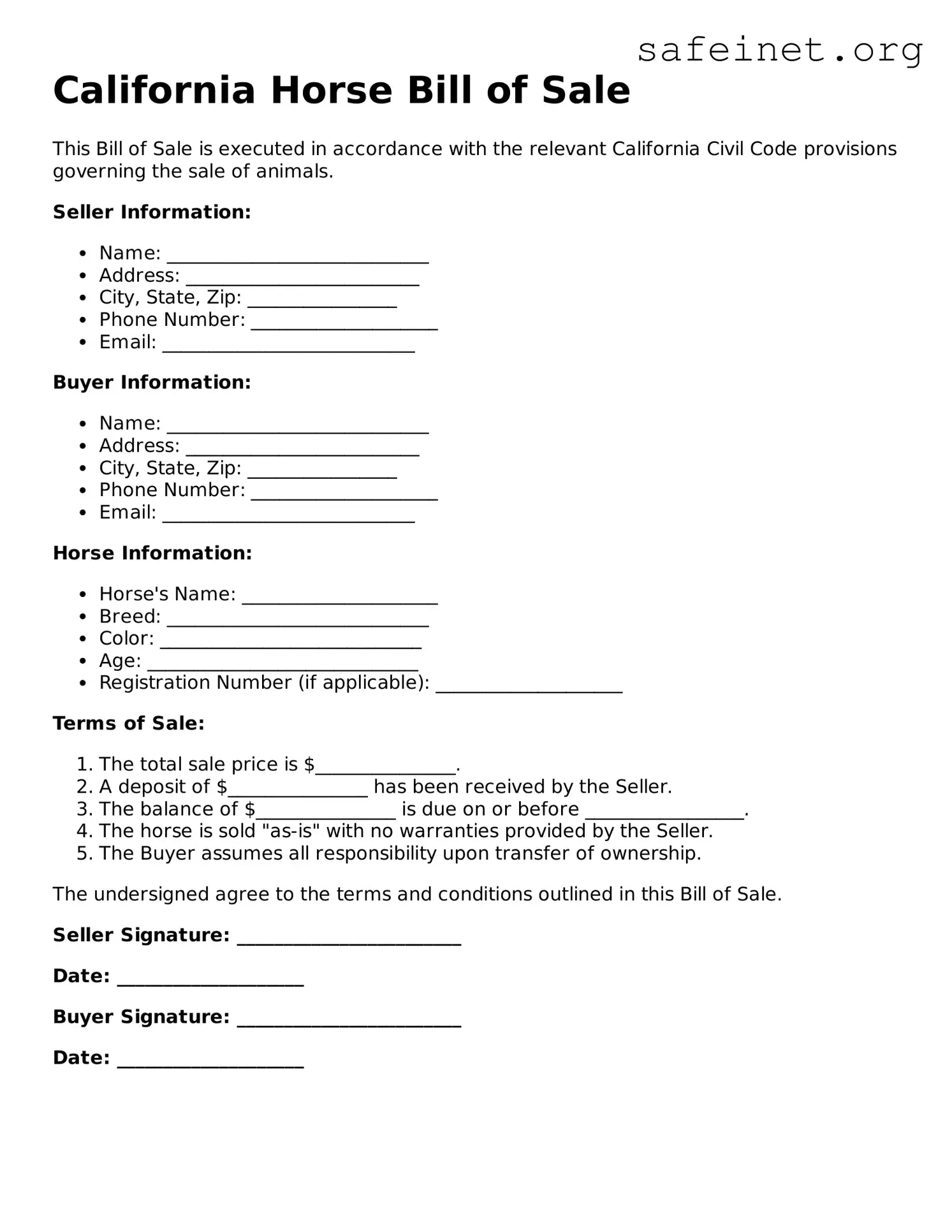What is a California Horse Bill of Sale?
A California Horse Bill of Sale is a legal document that records the transfer of ownership of a horse from one individual to another. This document serves as proof that the transaction occurred and includes important details about the horse, the buyer, and the seller. Having a well-drafted Bill of Sale can protect both parties involved in the sale, ensuring clarity and minimizing disputes in the future.
Why is a Bill of Sale important?
The Bill of Sale is essential for various reasons. Firstly, it provides legal evidence of ownership, which is particularly important should any issues arise after the sale. Additionally, it documents the sale price, any medical history of the horse, and any conditions attached to the sale, such as warranties or defects. This document is not just a piece of paper; it can be vital in resolving potential conflicts and establishing trust between the buyer and the seller.
What should be included in a Horse Bill of Sale?
A comprehensive Horse Bill of Sale should include several key components: the names and addresses of both the buyer and seller, the description of the horse (including breed, color, age, and registration number, if applicable), the sale price, and the date of the transaction. Moreover, it’s wise to include any disclosures about the horse's health or history and to outline whether the sale is as-is or if any warranties are provided.
Is a Horse Bill of Sale required by law?
While a Horse Bill of Sale is not legally mandated for all horse transactions in California, it is strongly recommended. Many insurance companies and equestrian organizations may require proof of sale for registration or insurance purposes. Moreover, having this document can help avoid misunderstandings or disputes later on.
Can I create my own Horse Bill of Sale?
Yes, you can create your own Horse Bill of Sale. However, it’s crucial to ensure that all the necessary details are included to protect your interests. Templates are often available online that can help guide you through the process, but customizing the document to fit your specific transaction is usually the best approach.
What if there are issues after the sale?
If problems arise after the sale, such as undisclosed health issues or disputes about ownership, the Bill of Sale serves as a reference point. You can rely on the document to help clarify the terms of the sale. In some cases, legal advice may be necessary to navigate more complex disputes, especially if the document contains any warranties or promises made at the time of sale.
Do I need witnesses or notarization for the Bill of Sale?
While California does not require a Horse Bill of Sale to be notarized or witnessed, doing so can add an extra layer of protection. Having witnesses or obtaining a notarized document can help confirm the legitimacy of the transaction and provide additional proof should any issues arise later on.
Can the Bill of Sale be used for other types of livestock?
Yes, a Horse Bill of Sale can often be adapted for the sale of other types of livestock. While many of the components will remain the same, it’s important to ensure that the description and relevant details accurately reflect the specific animal being sold. Always tailor the document to meet the unique requirements of the livestock involved to ensure clarity and legality.
